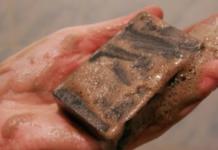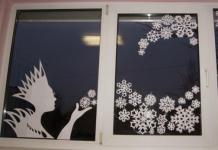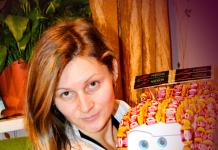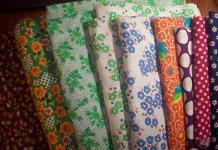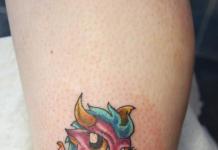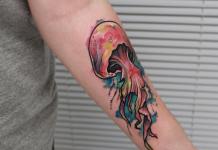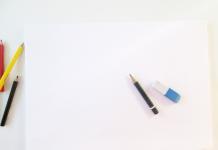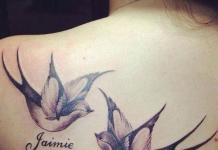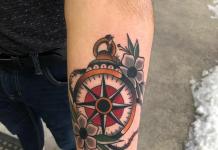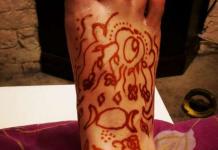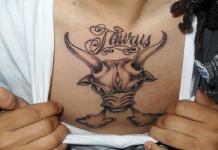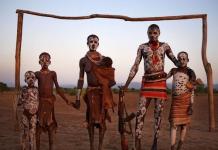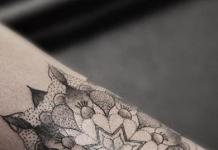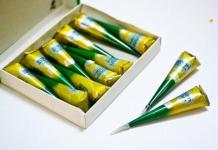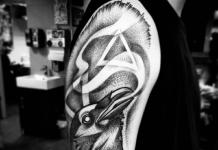Tatyana Belousova
I think that the teacher defectologist(and indeed, a teacher)- this is a psychologist, and an actor, and a designer all rolled into one. He must not only teach children speak beautifully and correctly, teach to think, reflect, draw conclusions, but also create the conditions for this. The environment should be attractive and bright to maintain interest in the activities. Each item should carry a semantic load, aesthetic pleasure.
I invite you to my cabinet. It is small in area and therefore it was important to maximize effectively use space walls. I came up with this design and called it conditionally « talking wall» . Our artist helped bring my ideas to life. Images I took the letters from the Internet.
I consider teaching children to read and write one of the most important tasks of my activity. (preparation for literacy). Almost 100% of the graduates of my group go to grade 1 who can read. This is very important for a successful start at school, especially for children with mental retardation and speech disorders.
Vowel sounds "live" on "Singing apple tree". At the beginning of training, it is just an apple tree, and then, as sounds are studied, each apple is replaced by sound image(articulation + letter). If in the lesson one of the children forgot what vowel sounds are, then he quickly looks back at "Singing apple tree" and remembers.

Paired consonants - they always go in pairs. By attributes you can remember the name letters: W has a hat and scarf, P has booties on its feet, V has felt boots, G has a tie, etc.

Always soft consonants: as you know, there are 3 of them, they sit on a soft cloud.

Always hard consonants: there are also 3 of them and they are located on a hard stone.

This funny train helps us learn how to divide words into syllables. In the first car, we define words consisting of 1 syllable, in the second - from two, etc.

I think that the use walls as an effective means of organizing a developing environment, is a simple solution to such a difficult problem.

Related publications:
The project method as an effective way to develop children's knowledge and skills on traffic rules Type of project: cognitive-game, information-oriented Project duration: short-term from 11/16 to 11/27/2015. Members.
ORGANIZATION OF THE DEVELOPING OBJECT-SPATIAL ENVIRONMENT OF THE SPEECH THERAPY ROOM (teacher-speech therapist Trashenkova L.V.) Modern.
Report on the organization of the developing subject-spatial environment in the office of the defectologist teacher REPORT ON THE ORGANIZATION OF THE DEVELOPING OBJECT-SPATIAL ENVIRONMENT IN THE OFFICE OF THE TEACHER-DEFECTOLOGIST. Kopanitskaya IV teacher-defectologist Main.
Passport of the office of the teacher-defectologist Municipal preschool educational budgetary institution kindergarten No. 11 of the combined type of the urban district of the city of Neftekamsk.
Passport of the complex methodological support of the office of the teacher-defectologist Municipal state-owned preschool educational institution "Kindergarten No. 56" of a compensating type Passport of a comprehensive methodological.
The project of organizing a subject-developing environment in the office of a teacher-defectologist 1. Purpose of the project Creation and improvement of a developing subject-spatial environment for children with disabilities.
Project activity in distance education as a non-standard non-traditional way of organizing educational processes“Project activity in distance education as a non-standard, non-traditional way of organizing educational processes focused on rendering.
One of the classics of Russian pedagogy claimed that he “educates everything”: people, books, and concepts.
In preschool educational institutions, even ... walls can be brought up.
Many developments sent to the competition “Early Development Groups. Developing Environment for Toddlers” are devoted to the design of the so-called “sensory wall” - a place where materials and various devices are attached to develop the sensory perception of children.
A huge role in the creation of such walls is given to color.
A lot of other notions of educators of younger groups from various regions of Russia are also connected with the work on distinguishing colors, naming them and using them.
We will introduce some of them to our readers today.
Flower-shaped furniture
|
teachers Kindergarten No. 30 "Topolek" Slavyanka, Primorsky Krai designed and created original furniture called "Pyatitsvetik", which simultaneously performs the function of a teaching aid.


"Pyatitsvetik" - these are five improved highchairs fastened together in the form of a "flower". Inside the "flower" there is a voluminous space, which is filled with balls sewn from colored fabric that matches the color of the chairs. Chairs and balls are painted red, green, yellow, white, blue. (The set of colors meets the requirements of the "Program for the upbringing and education of children in kindergarten" edited by M. Vasilyeva.)
"Pyatitsvetik" is always located in a group room, it is used in a variety of situations - domestic, gaming and actually teaching. Thanks to this, children get acquainted with colors and learn their names without specially organized classes for several months. The results of teachers' observations show that by February 73% of kids identify 3-4 colors, and 21% of kids know all the primary colors.
The town consists of four flat houses, just above the height of a child, in four colors: red, yellow, blue and green. In each house "live" geometric shapes of the same color - a circle, a square and a triangle. Between the houses there is a colored fence. Yellow cups are put on its yellow pegs, blue cups are put on blue pegs, etc. You can also decorate the fence with appropriate colored ribbons. Dogs are sitting near one of the houses. And here's the problem: their collars are unbuttoned all the time. Children have to put things in order - fasten the straps. Bear cubs are walking next to another house. And they always have problems in their costumes: either the belts unfasten, or the boots unlace.
There is a magical tree in Rainbow Town that changes its appearance according to the season. And a gentle yellow sun shines over the colorful houses and a cheerful multi-colored (satin) rainbow shines.
The theme of color continues with a screen covering the battery. It depicts blue water. And in the water, colorful fish “swim”, which are attached to the screen with buttons.
"Fun Journey"
|
|
This is the name of the sensory wall, which was invented for their kids. teachers Tatyana Rykova and Lyubov Melnikova from kindergarten No. 19 in Uzlovaya, Tula region. All elements of the panel are made of materials of different textures. If desired, the child can make “changes” in the toy world deployed on the wall: hang the fruit on the tree, transplant the birds, arrange the pattern on the back of the ladybug in a new way. And cheerful multi-colored koloboks are nothing more than a traffic light.
If the red bun “moves” and shouts: “I'm on fire! Look at me!” - no one should move. As soon as the green bun "gives a voice": "Now it's my turn!" - everyone starts to move, and the engine loudly knocks its wheels: “Knock-knock-knock!”

In the same Kindergarten "Topolek" p. Slavyanka for the little ones a little older, they painted the dining tables and chairs in different colors, adding two more to the five main ones - pink and blue. The names of colors are constantly present in colloquial speech: “Sasha, why are you taking a blue chair? You are sitting at a pink table, so you need a pink chair. Tables can also be used to organize didactic games that allow children to learn to correlate objects with each other by color. For example, tasks were given to arrange the cubes on the tables in accordance with the color: on the red table - red cubes, on the blue - blue, etc. A variety of options for using the name of a color in speech allows you to take into account the psychological characteristics of involuntary attention.
Today, much attention is paid to the creation of a subject-developing environment in a modern preschool educational institution. Teachers strive to use innovative approaches and principles for constructing an object-playing space, because the kindergarten group for children is their second home, because here they spend most of the day.
Today, the system of preschool education is undergoing a period of serious renewal: new forms of financing, a new system of remuneration, new GEF. Programs, forms of organization of educational activities have changed, the socio-cultural environment in which modern children grow up has changed significantly.
Download:
Preview:
Municipal budgetary preschool educational institution "Kindergarten "Alenka"
August conference
Topic: "How to make an interactive wall in a group:
tips for educators"
Prepared by: educators
MBDOU "Kindergarten "Alenka"
Akishina E.V.
Grinko N.A.
Nvumova T.N.
Stroganova N.P.
Tyulgan settlement, 08/24/2018
Subject: How to make an interactive wall in a group: tips for educators.(slide 1)
Target: generalize pedagogical experience in the field of preschool education.(slide 2)
Tasks:
To increase the level of professional competence of teachers, their motivation to use interactive pedagogical technologies in practice.
Transfer of experience through direct and commented display of interactive pedagogical methods and techniques in the educational process of preschool educational institutions.
To promote the development of professional and creative activity, the disclosure of the inner potential of each teacher, by creating conditions for individual and collective work.
Expected Result:improving the communicative competencies of teachers, introducing interactive forms of work into the practice of the teachers themselves.
Equipment : multimedia equipment, handout for each small group
Plan of the event:
- Entry into the topic. Relevance of the chosen topic.
- Introduction to the concept
- Features of working with an interactive wall
- Practical step-by-step demonstration
- Summarizing. Reflection.
I.Main part
Today, much attention is paid to the creation of a subject-developing environment in a modern preschool educational institution. Teachers strive to use innovative approaches and principles for constructing an object-playing space, because the kindergarten group for children is their second home, because here they spend most of the day.
Today, the system of preschool education is undergoing a period of serious renewal: new forms of financing, a new system of remuneration, new GEF. Programs, forms of organization of educational activities have changed, the socio-cultural environment in which modern children grow up has changed significantly.(Slide 3)
We live in an age of rapid development of information technologies, which make their own adjustments even in such traditional areas as children's play and toys, and therefore, accordingly, in the subject-developing environment. The issue of organizing the subject-developing environment of a preschool educational institution is by far the most relevant, since an important criterion for evaluating the activities of a preschool organization according to the Federal State Educational Standard is the created subject-spatial environment. Therefore, the main task is to combine traditional games, toys with bright visual material and modern technologies in a single developing space. This should be the starting point for work on a whole area - the creation of an interactive educational environment.
What is interactivity?(slide 4)
Interactivity (from English interaction - "interaction") - a concept that reveals the nature and degree of interaction between objects.
An interactive wall enables an adult and a child to participate together in creating an environment that can change and be easily transformed. An interactive wall is a unique tool that allows you to change the subject-developing environment of a preschool educational institution in a completely unusual way.
Welcome to visit"Magic Kindergarten"where modern technologies are used.(VIDEO).
Since our kindergarten "Alenka" does not have such modern technologies, our teachers use interactive walls made by their own hands in the game and in teaching.(slide 5)
All teachers are preparing groups for the new school year. Pay attention to the empty walls, because they can also be designed and used in working with children. For example, make one of the walls interactive.
The purpose of the interactive wall:Creating conditions for the full development of preschoolers in all educational areas of the Federal State Educational Standard in accordance with the specific features and requirements of the kindergarten educational program
The interactive wall solves important tasks:
Creates conditions for the game, cognitive, creative activity of children;
Allows you to change the subject-spatial environment, taking into account the educational situation;
Develops attention, memory, fine motor skills, speech, visual and auditory perception, imagination, creative thinking of preschoolers;
Provides emotional comfort in the group.
The interactive wall has the function of a kind of guide among a variety of materials, manuals, educational games. Implementing another principle of the Federal State Educational Standard of Education “recognizing the child as a full-fledged subject of educational relations”, the teacher, organizing work with an interactive wall, does not try to lead the child and direct him in the right direction, but on the contrary, respects his interests and individual characteristics of development. He is an observer, not interfering in activities, even for the purpose of encouragement. Offering to complete the task, he does not impose either the pace or the procedure for solving it, he does not evaluate the steps to its implementation. Consequently, the activities of children engaged in problem solving on their own are not regulated from outside by adults.
The system for organizing work with an interactive wall in each group is individual. Each teacher chooses how the work with the interactive wall will be carried out. As a rule, in younger groups, due to age characteristics, tasks are given for one day. In older groups, the system can be designed for a week or even a month.
All games and manuals are an integral part of the interactive wall. The content of games and manuals is determined by the age and individual characteristics of children.
(slide 6) For example, in our kindergarten for younger children (3-4 years old), such an interactive wall was invented, with which you can play the following didactic games: “Count the butterflies”, “Give out toys to children”, “Draw the rays of the sun”, “ Find an object”, “Our day”, “Find the same figure”, “What does the sun look like” and many others.
(Slide 7) For middle-aged children (4-5 years old), an interactive ecological wall was developed with a visual change of seasons,which can also serve as a calendar of nature. Working with the wall allows preschoolers to clarify temporal and natural-scientific ideas, develop mental operations, visual and auditory attention and perception, coherent speech, sound and syllabic word analysis skills.With the help of an interactive wall, children play the following games: “Pick up and tell”, “When it happens”, “Guess from the description”, “What season is it”, “It happens or not”, “Who has who”, “Summer or autumn" and many others.
(slide8) In the senior preschool group (5-6 years old), children go fishing with the cat Leopold using the interactive wall. Every day the cat Leopold introduces them to new game tasks (numbers, figures, etc.). With such an interactive wall, children of this age can play the following games: “Pick up by size”, “Arrange from low to highest”, “What is wider, what is narrower”, “Count the fish”, “Which shapes are bigger”, etc.
(slide 9,10) In the preparatory group, preschoolers travel by train, which introduces them to new material and with which you can play the following didactic games: “Lay out according to the number”, “More or less”, “Count and write down”.
Multifunctional aids have been developed that can be used for creative activities and for the development of speech. Speech games, games with elements of literacy training have been created for older preschoolers: “Guess the fruit from the description”, “What is the first sound in the word”, “Describe the profession”, etc.
Thus, the interactive wall allows you to diversify the equipment of the group, make it attractive to children. The dynamic series, which is shown on the interactive wall, affects the consciousness and imagination of the pupils. With the help of the wall, the teacher and children can create original interactive games and presentations. It can be used in classes on FEMP, literacy, speech development, visual activity - each element is presented in a new way. The interactive wall helps the teacher unobtrusively consolidate and expand the experience gained by the children, make the educational activity bright and dynamic, and at the same time demonstrate pedagogical skills.
II. Practical part
Let's move on to the practical part.. (The game "Tree" is being played, the audience is divided into 3 teams).
1. team: artistic and aesthetic direction;
2. cognitive direction;
3. social - communicative direction.
At the beginning of the school year, we will show our creativity and decorate an empty wall using the material offered to you (pictures, paper, scissors, glue, cards, tape, etc.) and beat it.
III. Reflection
If you learned something new and useful today, decorate your Interactive Wall with bright colors.
And if not, take a dark-colored flower.
Petersburg artist Olga Krokhicheva managed to turn an ordinary kindergarten, where her child goes, into a real museum of science.
Idea
Watching the growth of my child, I began to pay attention to how he learns the world around him. Associates sounds and words with shapes and objects. Over time, this developed into a full-fledged idea of creating an educational environment based on images. I thought how great it would be, for example, to turn the walls of a kindergarten into an unobtrusive information plane that would help children learn and explore the world.
Kindergarten
There is a problem with kindergartens in our country - everyone knows this. Therefore, after the birth of the child, we stood in line at several institutions at once. True, when the time came, none of them hit. But we were offered a place where we could sign up even now. There was no line, which surprised me a lot. I tried to find some reviews or information on the Internet - nothing. I went there with a referral out of pure curiosity: it turned out that it opened quite recently, it was remodeled from a school, and after the repair it still smelled of paint. I met with the manager, gave direction. And then, unexpectedly for herself, she blurted out: “Let me sign the kindergarten for you?”




Conditions
The manager, as befits an employee of a state institution, was surprised and immediately refused: there was no money. I explained that I did not require payment, and then a miracle happened: the woman asked if I could draw at all, and accepted my offer.
WE HAVE AGREED TO,
WHAT IF YOU DON'T LIKE THE RESULT, I WILL SIMPLY COLOR EVERYTHING,
AS IF NOTHING HAPPENED.
The administration received only two requests: to decorate the music hall as neutrally as possible so that the drawings on the walls do not interfere with the decoration for the holidays, and to fit somewhere a space landscape, as the garden was preparing for an open day on a space theme. In order to save time, we decided not to sketch. We agreed that if you don’t like the result, I’ll simply paint over everything, as if nothing had happened.
Job
No one pushed me or asked me to be on time. I started designing in August and finished in April. The work took about 50 days, I just had to take a break while the child was sick.
After the repair, 60 liters of white water-based paint remained in the kindergarten - on its basis, all the necessary colors were mixed with the help of colors. They even gave me money for concentrated pigments, brushes, rollers and a couple of markers. That's all it took to get the job done.
Before starting, I had to read a lot of literature on the norms and requirements for the design of such institutions. A kindergarten is a complex facility, there are a number of restrictions on the use of certain types of paint, the density of the pattern, the use of colors, for example, aggressive ones. Therefore, we did not form groups in which the guys spend most of their time, but the administrative corridor and stairs turned out to be quite suitable. The building has only three floors, and they were loosely connected. On the first two there were children's groups and a music hall, on the third - administration offices. Children several times a day go up all the stairs, go down the long corridor on the third floor, and go down.
Plots
In the corridor, it was decided to draw the entire wall of the solar system. I had to work with mixing paints of the right colors and studying books on astronomy. On my working sketch, there was Pluto in general, I didn’t even know that it was deprived of the status of a planet. "Cosmos" occupied half of the corridor on the third floor, another wall was painted with an underwater landscape, and the entrance to the elevator was stylized as a spaceship. After finishing the artwork, a fire inspector came to the kindergarten with a scheduled check, saw the details of the spacecraft painted on the panel, and seriously thought that this was an elevator connection diagram.
The idea to add a second layer, painted with ultraviolet paints and visible only under certain lighting, came by chance: a friend of mine at work ordered something similar. And I took note of the technique.
CROWNS, FRUIT AND LEAVES I DRAWED SO THAT THE CHILD Saw
AND I REMEMBERED, AND THEN I COULD RECOGNIZE THE WOOD ON THE STREET.
We repainted the walls of the music hall in pale blue and painted white clouds in the shape of animals on them. This unobtrusive plot, firstly, met the requirements of the garden management, and secondly, it suited the white piano and chairs.
The stairs were decorated with trees - fruit and deciduous trees, which are familiar to our climate. I drew the forms of crowns, fruits and leaves so that the child could see and remember, correlating certain signs of trees with names. I could name a tree, remember it, and then recognize it on the street.
Initially, there was an idea to sign the drawings - the names of plants, animals. But I was reminded that learning to read is not part of the kindergarten curriculum. In addition, the issue of compliance with the norms of fonts allowed for use on walls again arose. Therefore, they decided to abandon this idea. I signed only the constellations, but not so much for the children, but for the teachers, so that they themselves would not get confused.





Difficulties and consequences
Most parents did not believe in the sincerity of this story. The employees too. Someone thought that I was a student and defending my diploma. Yes, and all other options implied that I would receive some kind of benefit. That's funny. Although, yes, I made the place where my child spends a lot of time more fun. I guess I actually did it all for myself to some extent.
In the nine months of working on the project, I became a local ghost in a black coat: I drank tea with the Methodists, made friends with the guards. Everyone became very friendly. They joked, worried, commented, worried if I was sleeping here, because there is a lot of work.
Children, on the contrary, inspired and gave strength. We very rarely met with them, but when they passed into the music hall in a group of 15 people and vying shouted: “Hello! Hello! How beautiful! I wonder how! - it, of course, toned up.
Now, having completed the project, I still believe that this is a great idea and it can and should be implemented in different ways. My method is not the only one, and I'm even sure it's not the best. I would like people to pick up the idea of teaching children at an early age in this more systematic approach.
The other day, in the comments on LiveJournal, the resuscitator wrote to me that he went to his daughter's kindergarten to paint a gazebo. If someone who saves lives every day is able to spend their free time in this way, then each of us can do something too.
Around 10,000rubles spent for materials.
130 sq. meters - working area.
650 000 rubles - the potential cost of work (in case you invite hired workers)
Photos: Dima Tsyrenshchikov
Elena Ivanova
decorating, wall, thus, I pursue several goals.
Firstly; - Pictures, posters, illustrations are posted on topics of the week:
"Maslenitsa", "Autumn", "Russian tales" etc. (thus decorating third space) ;
Secondly; - I chose the topic for self-education on health saving. And for the prevention of vision, I partially use the author's technique of V. F. Bazarny. To do this, on a hanging line, I have didactic material that is perceived in the far vision mode and in the search mode, i.e. children receive information not only in the classroom and from books, but also from bright pictures hanging on wall at different levels.

In the classes on artistic and aesthetic development, children became more interested, they copy a lot with enthusiasm; drawings became more diverse, more meaningful. They try to draw unfamiliar animals, birds.




Also around the perimeter of the ceiling group of strung line on which didactic material is suspended. The oscillatory movements of the fishing line with clarity, creates an increased efficiency of visual perception.

Thus, the creation of a developing environment in group plays an important role in the development of the child. Therefore, every corner is important and wall in the group.
Related publications:
I think that a teacher-defectologist (and indeed, a teacher) is a psychologist, an actor, and a designer all rolled into one. He must not only teach children.
In the group we have a wall that was empty. For a long time we did not know what to do with her so that she would take on a beautiful appearance. Finally.
This year we did not change our tradition and designed the wall of memory of the Great Patriotic War. Parents and pupils of senior and preparatory groups, I asked.
May 9 at the Palace of Creativity is a special day. Great holiday Victory Day is celebrated by children, parents and teachers. This day is a symbol of pride.
Report "Socio-cultural space of preschool educational institutions" Moskvicheva O. V. Sociocultural space of the preschool educational institution Currently, in connection with the publication of the Federal State Educational.
Abstract of the GCD in the senior group "Journey into outer space" Summary of GCD in the senior group on the topic: "Journey into outer space" Tasks: 1. Continue to form children's ideas about space.
In 2014, we were given another group with children. And when the repair was done, it became clear that something was missing. Because our kids love it.






